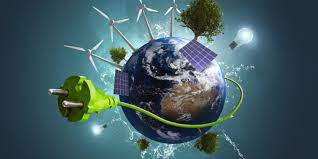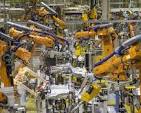The Role of Artificial Intelligence in Transforming the Energy Sector
As the world shifts towards sustainable energy solutions, artificial intelligence (AI) is emerging as a powerful tool in revolutionizing the energy sector. From optimizing energy consumption to enhancing grid management, AI is playing a crucial role in making energy systems more efficient and resilient.
Optimizing Energy Consumption
AI technologies are being used to optimize energy consumption across various sectors. Smart grids, powered by AI, can analyze data from sensors and smart meters to predict energy demand and adjust supply accordingly. This not only reduces waste but also lowers costs for consumers and providers alike.
In residential settings, AI-driven systems can learn user behavior patterns to optimize heating, cooling, and lighting. By predicting when occupants are likely to be home or away, these systems can adjust settings to conserve energy without compromising comfort.
Enhancing Grid Management
The integration of renewable energy sources like solar and wind into the power grid presents challenges due to their intermittent nature. AI can help manage these fluctuations by predicting weather patterns and adjusting the distribution of power accordingly. This ensures a stable supply while maximizing the use of renewable resources.
Moreover, AI algorithms can detect anomalies in grid operations that may indicate potential failures or inefficiencies. Early detection allows for timely maintenance and reduces downtime, ensuring a reliable power supply.
Facilitating Energy Storage Solutions
Energy storage is critical for balancing supply and demand in modern grids. AI plays a key role in developing more efficient storage solutions by optimizing battery management systems. These systems use machine learning algorithms to predict charge-discharge cycles, extending battery life and improving performance.
Driving Innovation in Renewable Energy
The development of new renewable technologies is being accelerated by AI-driven research. Machine learning models analyze vast amounts of data from experiments and simulations to identify promising materials for solar panels or wind turbines faster than traditional methods.
This rapid innovation cycle leads to more efficient renewable technologies entering the market sooner, further driving down costs and increasing adoption rates globally.
Conclusion
The integration of artificial intelligence into the energy sector holds immense potential for creating smarter, more sustainable systems worldwide. By optimizing consumption, enhancing grid management, facilitating storage solutions, and driving innovation in renewables, AI is helping pave the way towards a cleaner future.
As technology continues to advance at an unprecedented pace, it will be exciting to see how further developments in AI will continue transforming the landscape of global energy production and consumption.
6 Essential AI Strategies to Enhance Energy Efficiency and Sustainability
- Utilize predictive analytics to optimize energy consumption.
- Implement machine learning algorithms to forecast energy demand more accurately.
- Use AI-powered sensors for real-time monitoring of energy usage.
- Employ natural language processing for analyzing customer feedback on energy services.
- Apply reinforcement learning to improve energy efficiency in systems and processes.
- Explore AI applications in renewable energy sources for sustainable development.
Utilize predictive analytics to optimize energy consumption.
By leveraging predictive analytics in energy AI, businesses and consumers can proactively optimize their energy consumption. By analyzing historical data and real-time information, predictive analytics can forecast energy demand patterns and adjust usage accordingly to minimize waste and reduce costs. This proactive approach enables more efficient energy management, leading to significant savings and environmental benefits.
Implement machine learning algorithms to forecast energy demand more accurately.
By implementing machine learning algorithms to forecast energy demand more accurately, organizations in the energy sector can gain valuable insights that enable them to optimize their operations and resource allocation. These algorithms analyze historical data, weather patterns, and other relevant factors to predict future energy requirements with greater precision. By leveraging AI-driven forecasting, companies can proactively adjust their production schedules, distribution networks, and pricing strategies to meet demand fluctuations efficiently, ultimately leading to cost savings and improved overall system performance.
Use AI-powered sensors for real-time monitoring of energy usage.
AI-powered sensors for real-time monitoring of energy usage are transforming how businesses and households manage their energy consumption. These advanced sensors collect data on energy use patterns and send it to AI systems, which analyze the information to provide actionable insights. By identifying inefficiencies and peak usage times, these systems enable users to make informed decisions about reducing energy waste and optimizing consumption. This not only leads to cost savings but also contributes to environmental sustainability by minimizing unnecessary energy use. Additionally, real-time monitoring allows for quicker responses to any anomalies or issues in the system, ensuring a more reliable and efficient energy infrastructure.
Employ natural language processing for analyzing customer feedback on energy services.
Employing natural language processing (NLP) for analyzing customer feedback on energy services can provide valuable insights for improving service quality and customer satisfaction. By utilizing NLP algorithms to parse and interpret text data from customer reviews, comments, and surveys, energy companies can gain a deeper understanding of customer preferences, pain points, and expectations. This analytical approach enables companies to identify trends, sentiment patterns, and areas for improvement more efficiently, allowing them to tailor their services to better meet the needs of their customers. Ultimately, leveraging NLP in analyzing customer feedback can lead to enhanced service delivery, increased customer loyalty, and a more personalized experience for energy consumers.
Apply reinforcement learning to improve energy efficiency in systems and processes.
Reinforcement learning, a subset of machine learning, can significantly enhance energy efficiency in various systems and processes by enabling them to learn and adapt through trial and error. By applying reinforcement learning algorithms, systems can continuously optimize their operations based on real-time feedback, leading to more efficient energy use. For instance, in industrial settings, these algorithms can adjust machinery operations to minimize energy consumption while maintaining productivity. In building management, reinforcement learning can optimize heating, ventilation, and air conditioning (HVAC) systems by predicting occupancy patterns and adjusting settings accordingly. This dynamic approach not only reduces energy waste but also lowers operational costs and contributes to sustainability efforts.
Explore AI applications in renewable energy sources for sustainable development.
Exploring AI applications in renewable energy sources is a crucial step toward achieving sustainable development. Artificial intelligence can optimize the efficiency and integration of renewable energy systems like solar, wind, and hydroelectric power. By using machine learning algorithms to analyze weather patterns and predict energy output, AI enhances the reliability of these intermittent energy sources. Moreover, AI can improve grid management by balancing supply and demand in real-time, reducing waste and ensuring a stable power supply. As the global demand for clean energy grows, leveraging AI in renewable energy not only boosts efficiency but also accelerates the transition to a more sustainable future.


